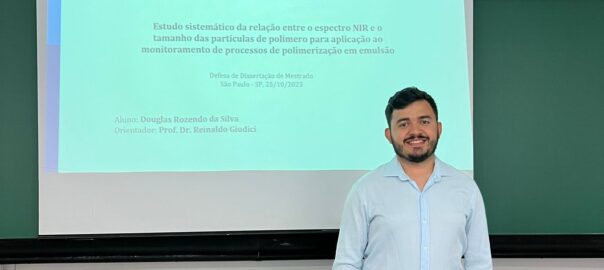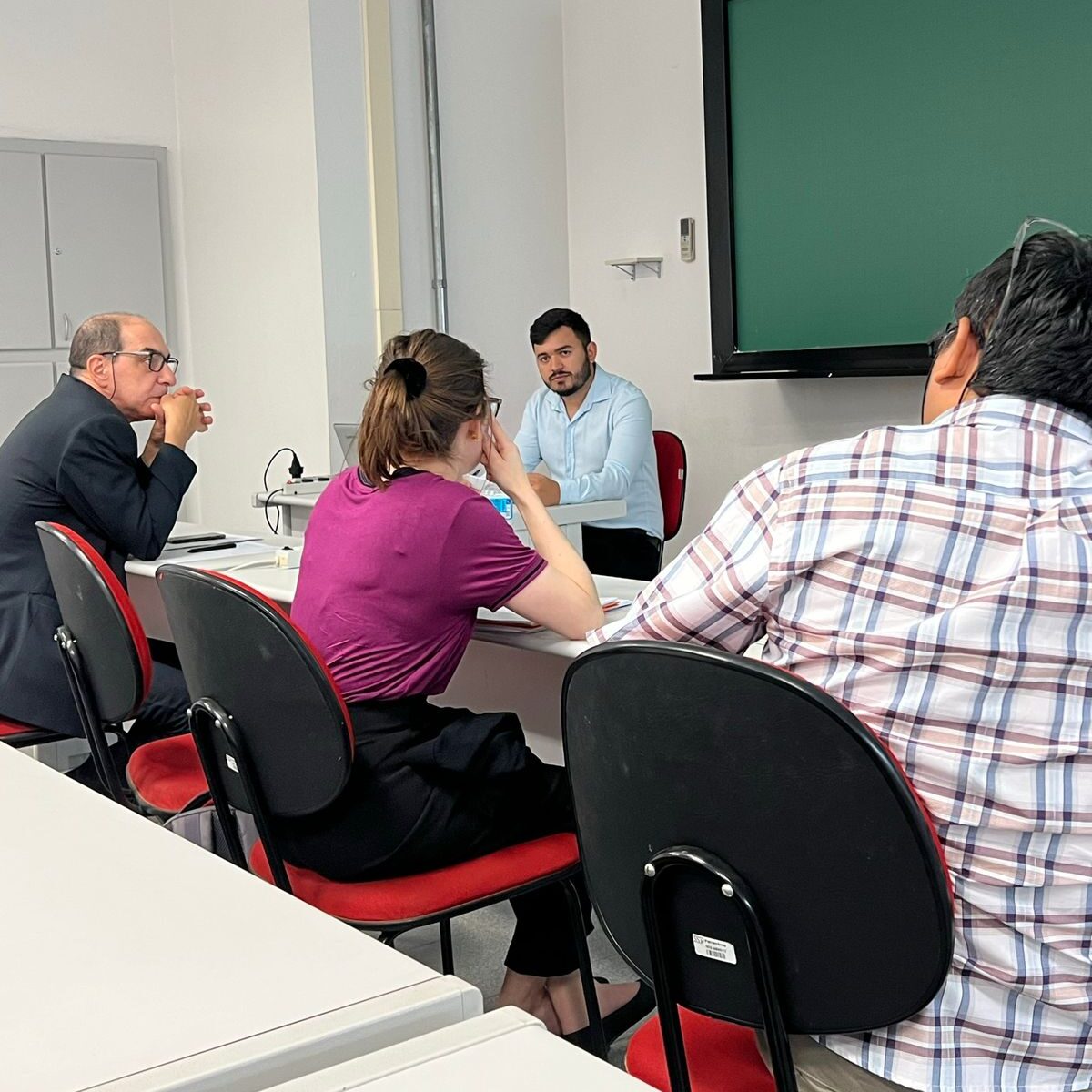On October 25, 2023, Douglas Rozendo da Silva’s master’s degree defense took place, under the guidance of Professor Reinaldo Giudici, whose work was developed at the Research and Innovation Laboratory in Catalytic Processes (LaPCat). Douglas obtained the title of Master of Science from the University of São Paulo when presenting his dissertation entitled “Systematic Study of the Relationship between the NIR Spectrum and the Size of Polymer Particles for Application in Monitoring Emulsion Polymerization Processes”.
TITLE: Systematic study of the relationship between the NIR spectrum and the size of polymer particles for application to monitoring emulsion polymerization processes
SUMMARY
Emulsion polymerization techniques have been increasingly used in the paint and resin industries, among others, due to their versatility and ability to produce polymers with different properties. Improving these processes requires the development of in-line measurement techniques of process variables that monitor the progress of polymerization, including the size of the polymer particles produced. The near-infrared spectroscopy (NIR) technique, combined with the use of optical fibers, is very promising for this monitoring, however, the information obtained by this technique is not a direct measurement of the variables to be monitored: it is necessary to develop a calibration model that correlates spectrum information with the properties of interest. This calibration step is essential for the successful application of the technique and, although we seek to build robust models, a model that is valid for different reaction systems has not yet been found. In this work, 11 homopolymers and 3 copolymers were synthesized using the monomers Methyl methacrylate (MMA) and styrene (St), and then their spectra were analyzed in NIR. The spectral region located between 9000 and 14000 cm-1 showed high sensitivity to the particle size evolution of the emulsion polymerization tests carried out. With the creation of calibration models using principal components regression (PCR), partial least squares regression (PLS) and artificial neural networks (ANN) developed with two databases of different spectral ranges (14000 – 4000 cm-1 and 14000 – 9000 cm-1), satisfactory results were obtained in terms of coefficient of determination (R2) and mean squared error of cross-validation (RMSECV), indicating good precision and performance. Among the models obtained, it is worth highlighting that the diameter model obtained from ANN and the spectral database from 14000 to 4000 cm-1 obtained the best performance. Thus, the results showed that it is possible to develop a robust calibration model, which is valid for monitoring particle size in different formulations (monomers) and process conditions.
Keywords: Emulsion polymerization; Monitoring; particle size; NIR spectroscopy; Modeling.


